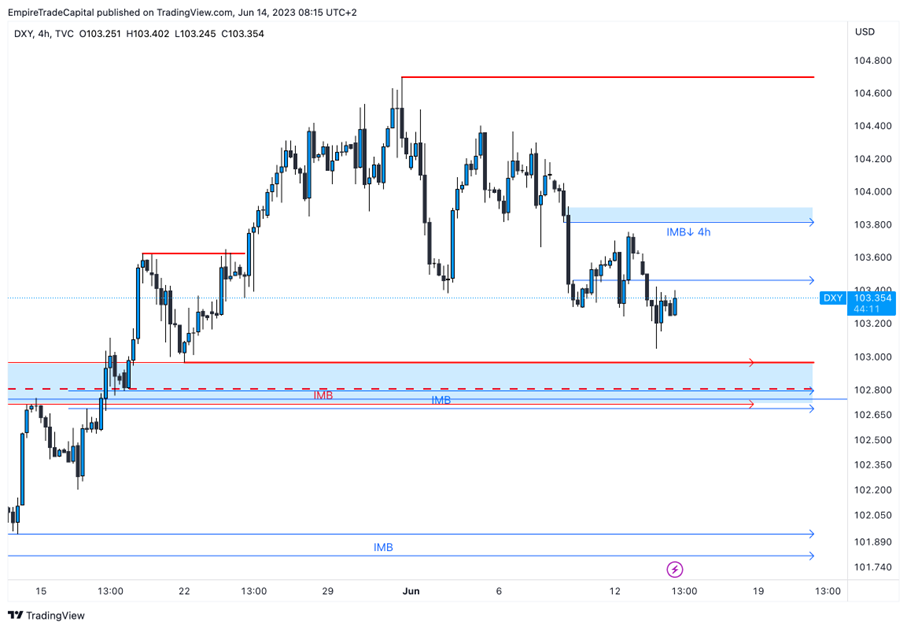When I took a closer look at the Fed's monetary policy, I found that the target is to get inflation to 2.0%. That suggests to me the potential for further interest rate hikes. But for me as a trader, this means only one thing - a break from trading. The market is in a Range zone before the announcement, and then during the announcement you can see massive liquidity takes on both sides, long and short. I will want to execute the next trade when the price stabilizes.
DXY
As can be seen on the chart below, the US Dollar Index (DXY) is currently showing almost zero change in price. That is due to the liquidity build-up ahead of the interest rate announcement. The situation is similar in all markets that are linked to the dollar. Every day is also not a trading day, and only the most patient can endure such moments in the market.
Considering the technical factors of this market, I am most interested in the zone around 102.8. It is the level of the previous structure, and there are several aspects there that I analysed here in the Traders diary on Monday. Once the price closes below the higher low of 102.964, it will indicate the potential for a decline. Until then, the 4hr timeframe will be bullish, which could amplify the interest rate hike. In one other scenario, I see the possibility of a short-term drop to this zone by an untracked bullish impulsive move, which would also imply the potential for further upside. [1]
Trading is not about predicting the price, and a trader doesn't even need to know what will happen to the price, to make a profit. It is about reacting promptly, without the influence of emotions, following a trading plan and risk/money management.

[1] Forward-looking statements are based on assumptions and current expectations, which may be inaccurate, or on the current economic environment, which may change. Such statements are not guarantees of future performance. They involve risks and other uncertainties that are difficult to predict. Results may differ materially from those expressed or implied by any forward-looking statements.








